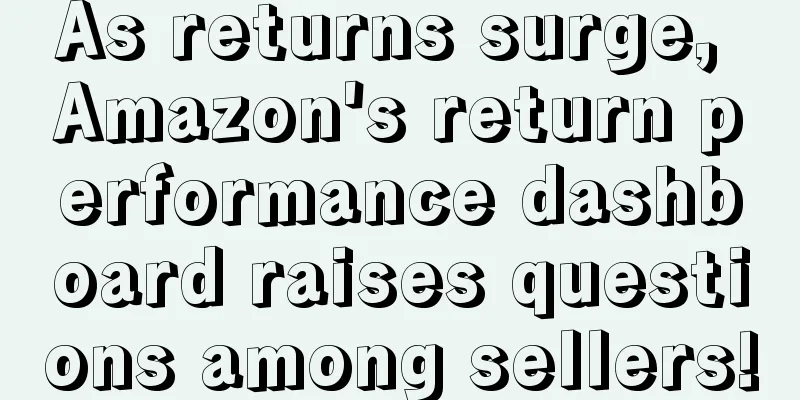|
▶ Video account attention cross-border navigation In the first half of the year, the annual Prime Day opened its doors to sellers ahead of schedule. However, under the impact of account blocking and price wars, many sellers’ stores collapsed before they could even handle half of their orders. The peak season passed in a flash, and they didn’t even have time to catch its tail.
For sellers who have been experiencing ups and downs since the beginning of the year, life is precious, but love is more precious. If sales are booming during the peak season, both can be thrown away. If sales are booming, can we meet again? The seller prayed to the Buddha 50,000 times. After much anticipation, with the arrival of traditional European and American festivals, sellers finally welcomed the peak sales season. Riding on the wave of big promotions, the performance of many sellers is booming. Many bigwigs have posted their report cards, and their dazzling results can be described as a clear dimensionality reduction strike. ▲ The picture comes from the seller communication group However, some sellers have also been left out of the peak season. One seller complained: Taobao’s orders are more than Amazon’s own orders. ▲ The picture comes from the seller communication group Although the peak season has arrived, logistics delays, cost doubling and other additional packages are also forced to buy one get one free. Now that Halloween has just ended, although the performance of many sellers has climbed due to the cosplay craze, it has also been accompanied by a sharp increase in return rates. Having lost their usefulness, sellers are “happily” facing a wave of returns after Halloween! It is learned that according to relevant institutions, the amount of returned products during this peak season may exceed 150 billion US dollars. Although the festival stimulates consumers' desire to buy, as the enthusiasm fades, the desire to return products has also increased significantly. As soon as Halloween ended, some sellers said bluntly: Be prepared for a wave of returns, with a minimum standard of 5%-8%. ▲ The picture comes from Weibo Many sellers feel the same way. Some sellers had a return rate of 5% during Halloween, and some sellers received more than 30 returns from customers early the next morning, all of which were received between October 25 and October 30. Some sellers even had a return rate of nearly 20%, which means that they returned all their products after use during Halloween. The reason why returns are such a headache for sellers is that Amazon's return policy is too biased towards consumers, providing buyers with free automatic refunds regardless of the reason for the return. This has also led to some buyers taking advantage of the policy to get something for free, damaging the rights and interests of sellers. Superfluous? Return performance dashboard raises questions among sellers! It is learned that after the automatic return service fully covered FBA and FBM sellers, Amazon has taken another action recently and issued an announcement stating that the Return Performance Dashboard originally scheduled to be launched on October 21 will now be officially open for use, covering all self-delivery sellers in the United States, Europe and Japan. Amazon said in the announcement that the return performance dashboard can help sellers monitor return performance and proactively solve return issues that previously required manual management. At the same time, a return analysis page was launched to help sellers identify any product listings that have encountered return issues and take action on them. The reference return performance indicators are as follows: - Return Requests Approved More Than 24 Hours: The number of return requests that were manually approved more than 24 hours after the initial request was received.
- The number of return requests rejected by the seller.
- Return-related buyer contact rate: One contact is counted for a buyer's return request, regardless of the number of messages sent.
At first glance, the Return Performance Dashboard helps sellers improve the efficiency of handling returns, but in reality, many sellers do not appreciate it. Some sellers have reported that Amazon’s target indicator threshold for “rejected returns” is “<=2%”, but there is no clear definition of the conditions for inclusion in this range. This means that all rejected returns will be included in the indicator. In addition, some sellers pointed out that under Amazon's prepaid return plan, this dashboard is superfluous because for all sellers' self-delivered orders, Amazon will approve requests that comply with its return policy on behalf of the sellers. Some sellers even sarcastically said that Amazon should set up another "customer fraud dashboard." It can be seen that at this stage, sellers still need to fight for a long time with the return issue in the protracted battle during the peak season. Once again, we remind all sellers to ensure that the packaging is intact, prevent product damage, and ensure the integrity of product information. At the same time, keep communicating with consumers, effectively solve various problems, and reduce the return rate as much as possible.
|










